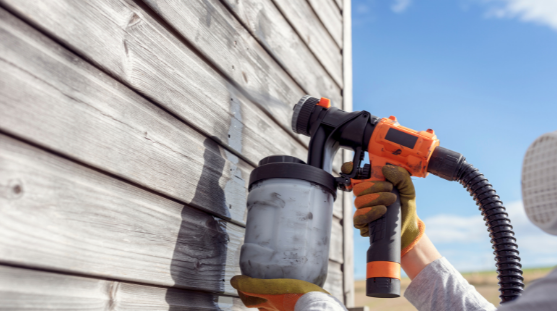
What Is A Paint Sprayer?
Posted on November 30, 2021
You may have driven past a home with painters everywhere and wondered what all the cords and hoses are for. Since when does painting require electricity? What you probably saw was a commercial paint sprayer. These machines use compressed air to force paint droplets through a special tip designed to produce a specific pattern. Paint sprayers are commonly used in both residential and commercial painting due to their effectiveness and speed. Today we will briefly discuss what a paint sprayer is, what it does, and how it does it.
What Exactly is a Paint Sprayer?
In modern construction, a paint sprayer describes a machine designed to take most forms of paint and with the use of compressed air and a spray tip, apply the paint to a surface. In most cases, this describes an “on demand” sprayer, which means the air compressor contained within the sprayer only operates when the trigger is depressed. This is in contrast to older spray technology, which often used a separate air compressor and spray gun, such as is common in automobile painting. These on demand sprayers usually offer several ways to control the application of the paint, such as interchangeable spray tips and adjustable air pressure.
Why Would I Use a Paint Sprayer?
Paint sprayers are great for painting large areas because they can apply a large volume of paint very quickly. This is particularly advantageous for professional painters who are often on a deadline. These sprayers can be used indoors or outdoors and can be used with most types of paint. Most professionals also use other tools in conjunction with sprayers, such as back rollers and paint guards to improve the finish of the paint and reduce overspray.
Where Would I Avoid Using a Paint Sprayer?
Paint sprayers require a cleaning process to be performed every time the paint is changed, so some pro painters find it to be faster to use rollers and brushes when the project is small, or confined to a small space. Also, some paints are nor designed to be sprayed. These can include paints with special additives, such as paints designed to be used in cold weather or those containing a texture. Spraying paint usually requires it to be thinned, and these paints often require the paint be applied as is.





